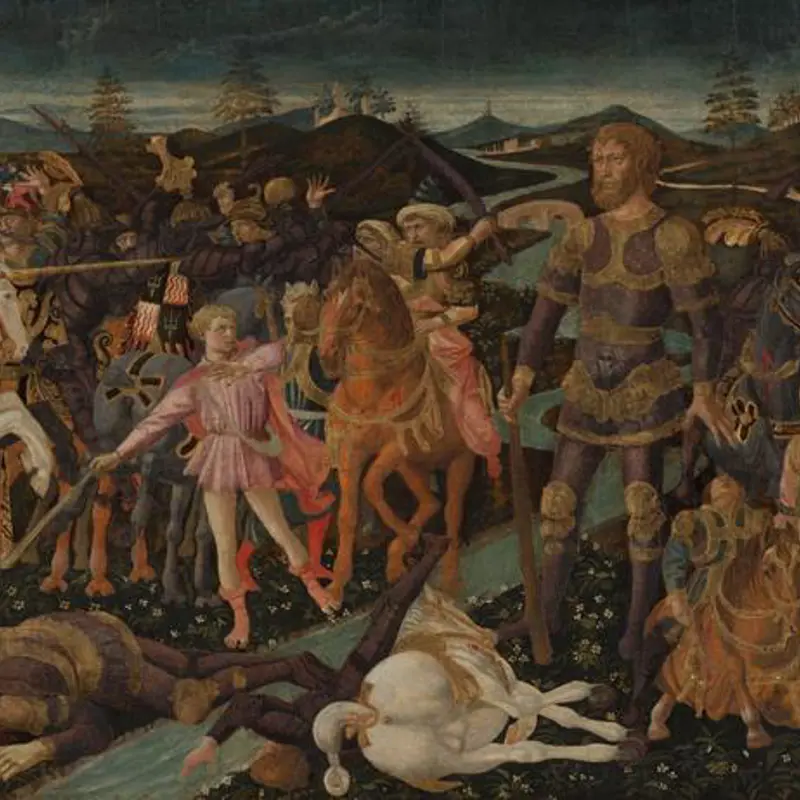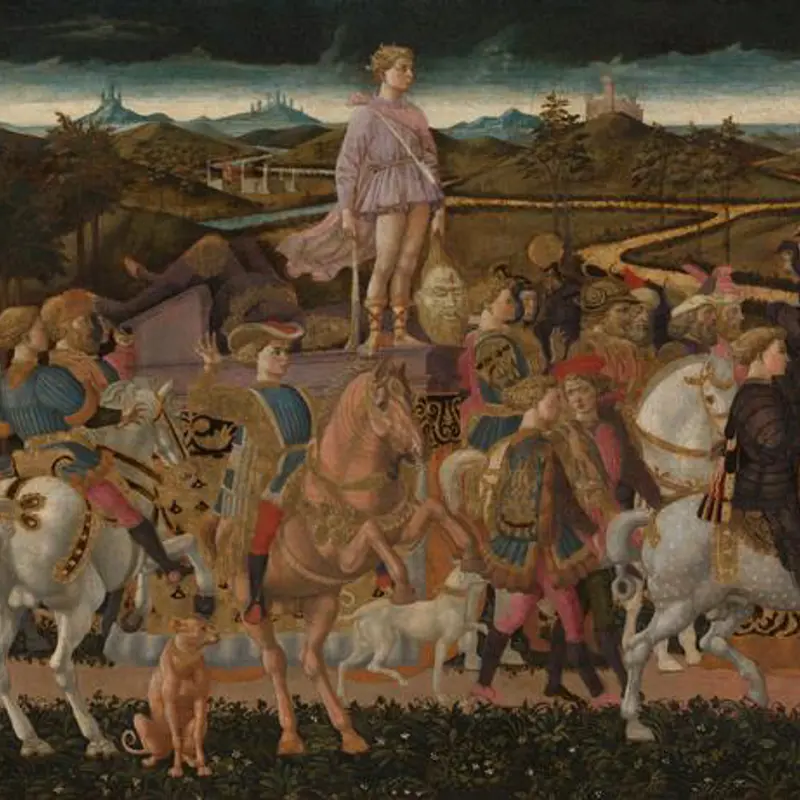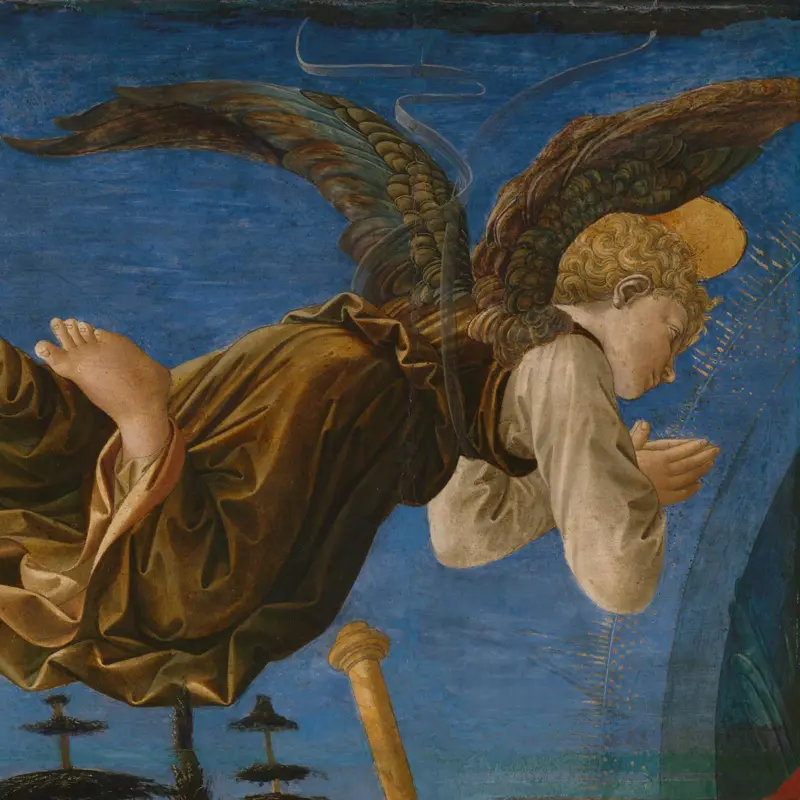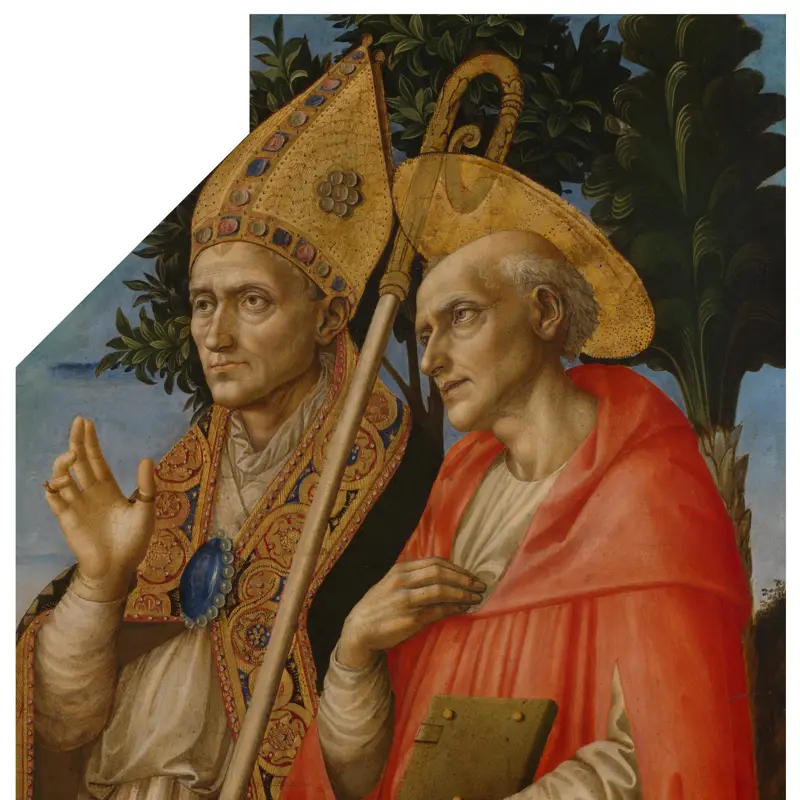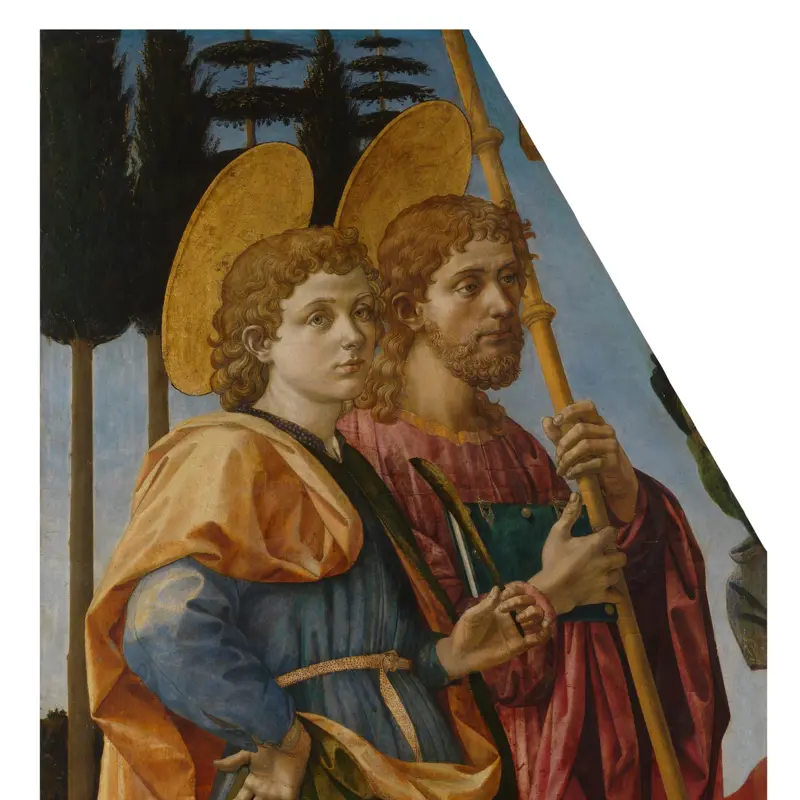Francesco Pesellino, 'The Triumph of David', about 1445-55
About the work
Overview
A fantastic procession winds its way through a Tuscan landscape dotted with hills and walled towns. Extravagantly dressed nobles ride prancing horses, while their hounds, a hunting cheetah and even a bear trot along beside them.
Although it looks like medieval Italy, this actually shows a biblical event: David’s triumphant return to Jerusalem after killing the giant Goliath, an enemy of Israel. He stands proudly on a horse-drawn cart, holding Goliath’s head by the hair.
This long and detailed painting was probably once set into the panelling of a room, maybe above a chest or a seat. At the right a young man and a woman greet each other outside the walls of a city – this might be a betrothal, and the panel was possibly made to celebrate a marriage.
Key facts
Details
- Full title
- The Triumph of David
- Artist
- Francesco Pesellino
- Artist dates
- 1422 - 1457
- Part of the series
- Story of David Panels from a Pair of Cassoni (?)
- Date made
- About 1445-55
- Medium and support
- Egg tempera on wood (probably poplar)
- Dimensions
- 43.3 × 177 cm
- Acquisition credit
- Bought with the assistance of the Art Fund and a number of gifts in wills, 2000
- Inventory number
- NG6580
- Location
- Room 62
- Collection
- Main Collection
- Frame
- 20th-century Replica Frame
Provenance
Additional information
Text extracted from the ‘Provenance’ section of the catalogue entry in Dillian Gordon, ‘National Gallery Catalogues: The Fifteenth Century Italian Paintings’, vol. 1, London 2003; for further information, see the full catalogue entry.
Exhibition history
-
2023Pesellino: A Renaissance Master RevealedThe National Gallery (London)7 December 2023 - 10 March 2024
Bibliography
-
2000National Gallery, The National Gallery Review: April 1999 - March 2000, London 2000
-
2001
C. Baker and T. Henry, The National Gallery: Complete Illustrated Catalogue, London 2001
-
2003Gordon, Dillian, National Gallery Catalogues: The Fifteenth Century Italian Paintings, 1, London 2003
Frame
This replica frame was probably made at the Gallery in the 20th century. A pinewood frame with water gilding, it features a fillet and an ogee moulding.
Pesellino’s The Triumph of David may have once been set into the panelling of a bedchamber or incorporated into a cassone.
About this record
If you know more about this work or have spotted an error, please contact us. Please note that exhibition histories are listed from 2009 onwards. Bibliographies may not be complete; more comprehensive information is available in the National Gallery Library.
Images
About the series: Story of David Panels from a Pair of Cassoni (?)
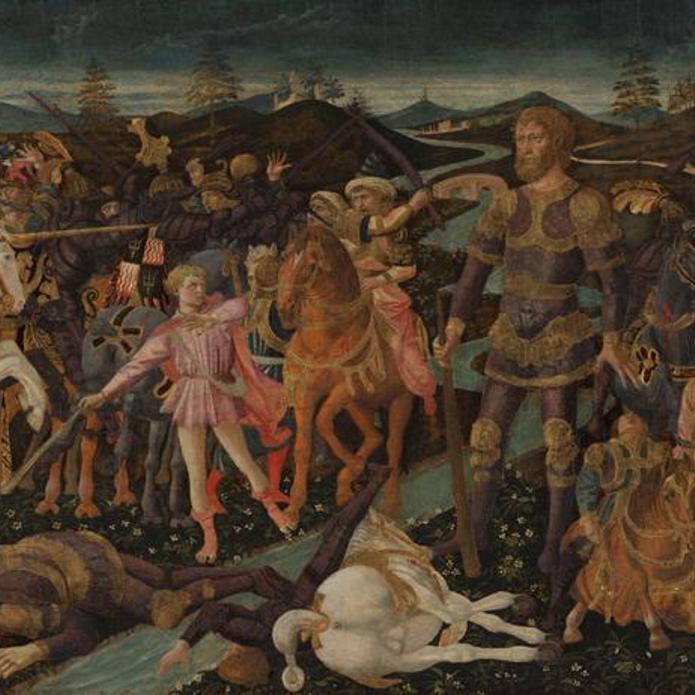
Overview
There’s so much going on in these pictures that it’s hard to make out the story. Battles and parades, knights and nobles, horses, hounds, lions, bears and giants are crammed in a flowery Tuscan landscape. Although it looks like a fairy tale set in medieval Italy, the story comes from the Bible and tells how a brave shepherd boy, David, married a princess after defeating a giant, Goliath.
The long shape of each painting is due to their original function. They would probably have been set into the panelling of a private room, possibly over a chest. We don't know exactly who they were made for, but emblems associated with the Medici, the ruling family of Florence in the fifteenth century, are shown on some of the clothing. They might have been made for a Medici marriage.

